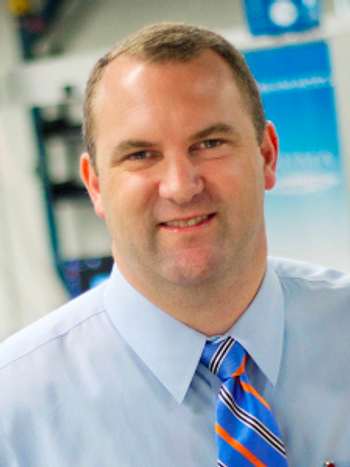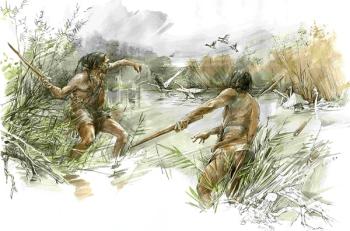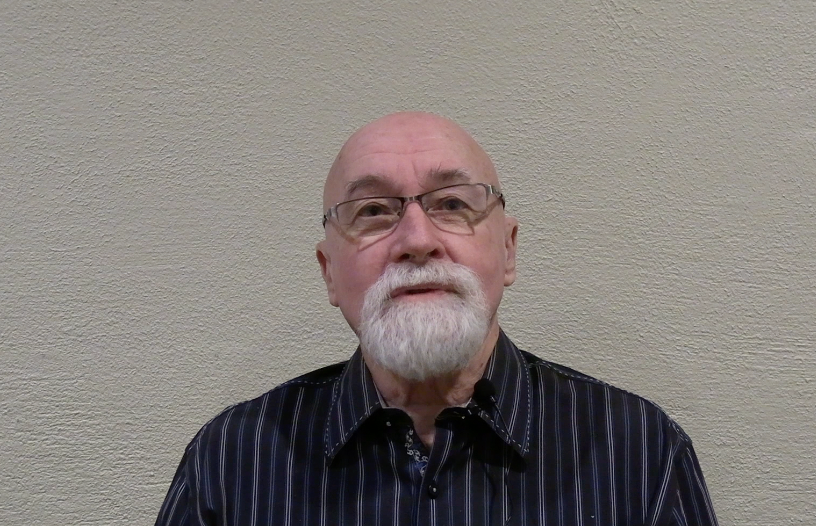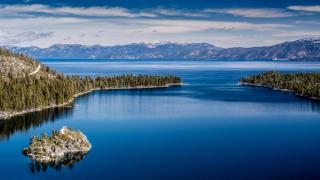
Spectroscopy Interviews
Latest News

Pursuing a Career in ICP and Spectroscopy: An Interview with John Burgener
Latest Videos

More News

The Surface-Specificity of IRRAS in Studying Soluble Organic Acids: An Interview with Alexandra Deal
Spectroscopy spoke with Alexandra Deal about her latest research in using infrared reflection absorption spectroscopy (IRRAS) to analyze molecules at the surface level.

At the Eastern Analytical Symposium (EAS) in Plainsboro, New Jersey, Spectroscopy sat down with Robert Kennedy to discuss his research and career in analytical chemistry.

At the Eastern Analytical Symposium (EAS) in Plainsboro, New Jersey, Spectroscopy sat down with Curtis Marcott to discuss his research and career in spectroscopy.

Monica Arienzo, an associate research professor in the Division of Hydrologic Sciences at the Desert Research Institute, and her team recently used ATR-FT-IR to determine the polymer composition of plastic litter recovered by scuba divers from the lakebed of Lake Tahoe. Spectroscopy spoke to Arienzo about the significance of her work and how spectroscopy can be used to help monitor plastic litter in the environment.

At the 2023 Gulf Coast Conference, Spectroscopy spoke with Kevin Schug of the University of Texas at Arlington, about predicting gas phase vacuum ultraviolet spectra using machine learning. This interview was one of four conducted live at GCC 2023.

At the 2023 Gulf Coast Conference, Spectroscopy spoke with Elena Hagemann of Metrohm USA, about spectroscopy in relation to petrochemicals. This interview was one of four conducted live at GCC 2023.

Spectroscopy sat down with 2023 Lester W. Strock Awardee Maria Montes-Bayon to talk about her research and what winning the Strock award means to her.

Fresh off his plenary talk at SciX, Wei Xiong sat down with Spectroscopy magazine to talk about his career accomplishments and what he enjoys most about his job.

As a preview to SciX 2023, Spectroscopy magazine sat down with Ishan Barman of Johns Hopkins University to ask him about his thoughts on how artificial intelligence may impact spectroscopic research going forward.

As a preview to SciX 2023, Spectroscopy magazine sat down with Juergen Popp of the Leibniz Institute of Photonic Technology to ask him about his research exploring the use of Raman spectroscopy in applications such as infectious diseases and cancer diagnostics.

The Coblentz Society created the Clara Craver Award to recognize young individuals who have made significant contributions in applied analytical vibrational spectroscopy. The work may include any aspect of infrared (IR), terahertz (THz), or Raman spectroscopy in applied analytical vibrational spectroscopy. This year’s recipient, Ishan Barman, is an Associate Professor in the Department of Mechanical Engineering at the Johns Hopkins University with joint appointments in Oncology and Radiology and Radiological Science.

The AES Lifetime Achievement Award is given for exceptional career contributions to the fields of electrophoresis, electrokinetics, and related areas. This year’s recipient, James Landers of the University of Virginia, recently published (along with his colleagues) a paper illustrating a technique for fabricating electrophoretic microdevices for fluorescence detection.

Earlier this year, Spectroscopy spoke to Maria Montes-Bayón of the Faculty of Chemistry at the University of Oviedo (Asturias, Spain) regarding her work with single cell inductively coupled plasma mass spectrometry (ICP-MS) to study the uptake and apoptotic status of nanoplatinum (IV) treated cells, specifically selenized yeast.

Bruno Pagano, full Professor of Physical Chemistry at the University of Naples Federico II (Italy), and his team have turned to UV resonance Raman (UVRR) spectroscopy to better understand these interactions. Spectroscopy spoke to Prof. Pagano about his work and the potential of UVRR spectroscopy as a valuable tool for studying G-quadruplex structures in biologically relevant conditions.

Spectroscopy spoke with Montes-Bayón of the University of Oviedo about her work with single cell ICP-MS to study the uptake and apoptotic status nanoplatinum treated cells.

Arzak Mohamed from Macquarie University in Australia broke down how she uses spectroscopy to analyze ancient manuscripts.

Editor Patrick Lavery of Spectroscopy talked to two co-authors of a study that analyzed information about a 300,000-year-old wooden hunting stick found in modern-day Germany.

The study of exoplanets, or planets outside of our solar system, is becoming increasingly important in space exploration. Scientists are working to characterize these planets and Raman spectroscopy is playing a key role. Andrew Mattioda, a research scientist at the National Aeronautics and Space Administration (NASA) Ames Research Center, is on the front lines of this research.

LCGC and Spectroscopy magazines recently welcomed Caroline Hroncich to lead their joint editorial staff in print and online. In this interview, Hroncich talks with editor Patrick Lavery about her experience and what readers can expect for the future.

Single-cell ICP-MS was used to study the uptake and apoptotic status of nanoplatinum (IV) treated cells, specifically selenized yeast, and the question of using commercialized reference material to validate single cell ICP-MS analysis is addressed.

We interviewed an AI program (ChatGPT) for Spectroscopy asking questions about AI and its role in various applications for vibrational and atomic spectroscopy, including data analysis.

Gary McGeorge, Scientific Director at Bristol-Myers Squibb, spoke to us of the benefits and challenges associated with establishment of consistent resolutions while facilitating the steps associated with the implementation of process analytical technology (PAT).

ICP-MS was used to measure 46 different elements in 37 Azobé (Lophira alata) trees at two forest sites in Cameroon to determine the multi-elemental composition of trees in an effort to combat the illegal trade of timber.

Although milk is considered among the most complete and nutrition-rich natural foods, the concentration of vitamins and minerals in milk can vary depending on a variety of circumstances. Stelios Couris of the University of Patras and the Foundation for Research and Technology-Hellas (Patras, Greece) has been studying the inorganic elemental composition of a variety of milk samples using LIBS and spoke to Spectroscopy about this research.

Combining multiplex coherent anti-Stokes Raman scattering (MCARS) microscopy with automated data processing enables a simple and more accessible method for label-free bioimaging.











